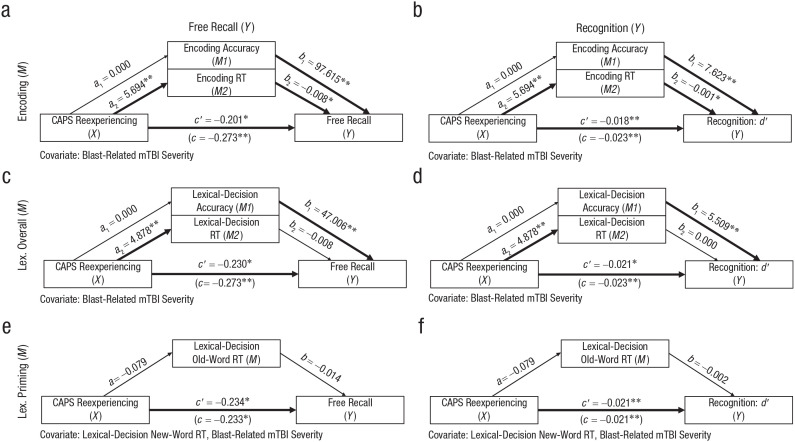Fig. 2.
Indirect effect models predicting word-memory performance. Shown are parallel mediation models testing whether encoding accuracy, encoding reaction time (RT), lexical-decision accuracy, and lexical-decision RT mediate the relationship between reexperiencing symptoms and free-recall/recognition performance (n = 147). c represents the total effect of Clinician Administered PTSD Scale for DSM-IV intrusions (X) on the dependent variable of interest (Y; e.g., free recall), and c′ represents the direct effect of X on Y when indirect effects of encoding or lexical-decision performance are accounted for in the model. a1 and a2 represent the unstandardized coefficients describing the relationship between X and the mediating variables of interest (M1, M2; e.g., encoding accuracy, encoding RT). Likewise, b1 and b2 represent the unstandardized coefficients describing the relationship between M1/M2 and Y. All mediation models included blast-related mild traumatic brain injury severity as a covariate. Asterisks indicate significant paths (*p < .05, **p < .01).

